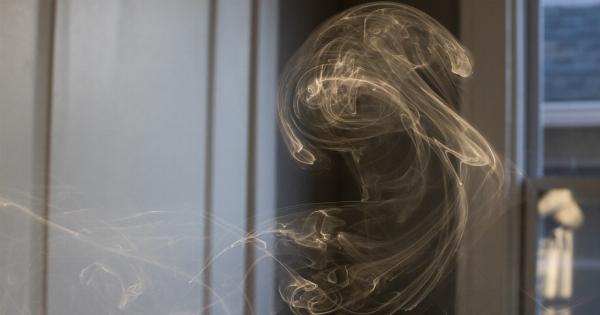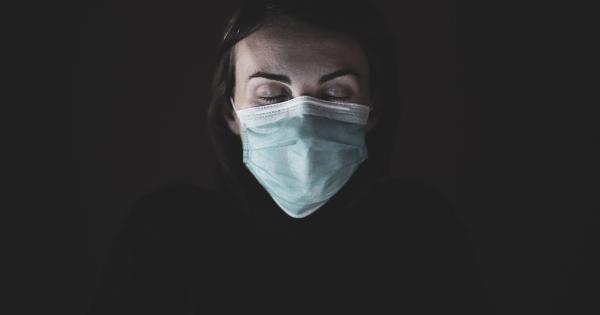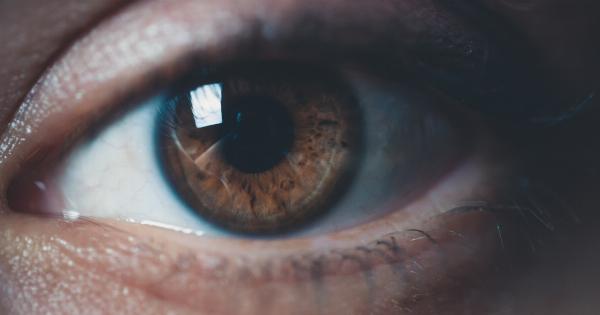Dry eye, also known as dry eye syndrome or keratoconjunctivitis sicca, is a common condition that occurs when the eyes do not produce enough tears or when the tears evaporate too quickly.
This can lead to uncomfortable symptoms such as dryness, redness, irritation, and blurred vision. In severe cases, dry eye can even cause damage to the cornea and impair vision. In this article, we will delve into the causes of dry eye and explore the most effective treatments available.
The Causes of Dry Eye
Dry eye can arise from various factors, including:.
- Inadequate tear production: This is often due to aging, hormonal changes, certain medications, or medical conditions such as Sjögren’s syndrome, rheumatoid arthritis, or diabetes.
- Rapid tear evaporation: Environmental factors such as dry or windy conditions, smoke, and air conditioning can cause tears to evaporate more quickly.
- Eye strain: Prolonged use of digital devices, reading for extended periods, or focusing on one task for a long time without blinking can reduce tear production and lead to dry eye symptoms.
- Structural issues: Eyelid problems, including eyelid inflammation (blepharitis) or eyelids that do not close properly during sleep (nocturnal lagophthalmos), can result in inadequate tear distribution and increased evaporation.
- Other factors: Contact lens wear, eye surgery (such as LASIK), certain medications (antihistamines, decongestants, diuretics), and systemic conditions such as thyroid disorders can contribute to dry eye.
Diagnosing Dry Eye
Diagnosing dry eye involves a comprehensive eye examination and an evaluation of your symptoms and medical history.
Your eye care professional may perform tests to measure your tear production, examine the quality of your tears, and assess the health of your cornea and surrounding structures. These tests may include:.
- Schirmer’s test: Measures tear production using blotting strips placed under the lower eyelids.
- Fluorescein or lissamine green staining: Dyes that highlight damaged or irregular areas on the surface of the cornea or conjunctiva.
- Tear film breakup time (TBUT): Measures the time it takes for the tear film to break up after a blink.
- Meibomian gland evaluation: Assesses the function and structure of the glands responsible for producing the oily component of tears.
Effective Treatments for Dry Eye
Successful management of dry eye typically involves a combination of self-care measures, lifestyle adjustments, and medical interventions. Here are some effective treatments:.
Artificial Tears
Artificial tears, available over the counter, can provide temporary relief by enhancing lubrication and moistening the eyes. It is important to choose preservative-free formulations if frequent use is required to prevent additional irritation.
Your eye care professional can recommend the most suitable artificial tears for your specific needs.
Punctal Occlusion
In cases where tears are draining too quickly from the eye, punctal occlusion may be recommended.
This involves blocking the ducts that drain tears from the eye, either temporarily or permanently, using dissolvable plugs or tiny silicone or gel-filled plugs. By keeping more tears on the eye’s surface, the symptoms of dry eye can be alleviated.
Medicated Eye Drops
Inflammation is a common factor in dry eye, and medicated eye drops can help manage this aspect of the condition. Prescription eye drops such as cyclosporine and lifitegrast can reduce inflammation and improve tear production.
These drops are commonly used long-term to maintain symptom relief.
Meibomian Gland Expression
For individuals with dry eye caused by blockages in the meibomian glands, a procedure known as meibomian gland expression or meibomian gland debridement can be beneficial.
This involves applying gentle pressure or heat to clear and unblock the glands, allowing healthy tears to be produced.
Lifestyle Modifications
Simple lifestyle adjustments can significantly reduce dry eye symptoms. These include:.
- Using a humidifier in dry environments.
- Practicing the 20-20-20 rule when using digital devices (looking at something 20 feet away for 20 seconds every 20 minutes).
- Wearing wrap-around sunglasses to protect the eyes from wind and dust.
- Avoiding smoke and other irritants.
- Blinking more frequently, especially during focused tasks.
Prescription Medications
In cases of severe dry eye, oral medications such as omega-3 fatty acids or topical medications like corticosteroids may be prescribed to manage inflammation and improve tear production.
These medications are typically used for short periods under close supervision by an eye care professional.
Moisture Chamber Eyewear
For individuals with severe dry eye symptoms, moisture chamber eyewear provides a protective environment for the eyes by minimizing exposure to dry air and reducing evaporation.
These specialized goggles or glasses create a moisture-rich space around the eyes, providing relief and improving comfort.
Intense Pulsed Light (IPL) Therapy
IPL therapy, commonly used in dermatology, can also help manage dry eye by unblocking meibomian glands and reducing inflammation.
It uses gentle pulses of light to improve the functionality of the glands, ultimately improving tear quality and reducing symptoms.
Surgical Interventions
In rare cases where other treatments have been unsuccessful, surgical interventions may be considered. These can include blocking tear ducts surgically or using amniotic membrane grafts to promote healing and reduce inflammation.
Conclusion
Dry eye is a multifactorial condition that can significantly impact quality of life. By understanding the underlying causes and available treatments, individuals with dry eye can take steps to manage their symptoms effectively.
It is important to consult with an eye care professional to determine the most suitable treatment plan based on the severity and underlying causes of the dry eye condition.





















